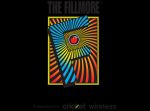Music Sin Frontera Regional Mexican Music

The global Mexican music revolution (it used to be called “regional”)
An old Chinese curse says, “May you live in interesting times”. Well, I do, musically, but it is not a curse, it is a exciting blessing, in fact, it is a happy revolution. It is the transition of the music that I hear in Mexico at county fairs and local music festivals, and in the plaza during the Patrias celebrations and the parades, and even in backyard parties, from “regional” to “global.”
What used to be called “regional Mexican” music is now really just Mexican music, and it is taking the world by storm.
The term “regional Mexican music” has generally been a vague catchall of banda. rancehero, corridos, norteño, sierreño, Son jarocho and mariachi. Of course, mariachi never was regional – it is the national music of Mexico, and it long ago went global. The ongoing international mariachi festival in Guadalajara with 25 bands from around the world is testimony to that.
But the globalization of Mexican “regional music” goes far beyond mariachi. Eslabon Armado and Peso Pluma’s “Ella Baila Sola” both topped a billion Spotify streams, that put them in the top 10 of Billboard’s all-genre Hot 100 along with the Bad Bunny/Grupo Frontera song, “Un x100to,” – unheard of for “regional music.
And this is not just Mexican’s streaming their local idols’ music. Four of the six Latin artists to reach 1 billion audio streams in the U.S. were Mexican and last year Mexican regional music grew 60% in the U.S., accounting for 21.9 billion streams. The is part of a larger trend – Mexican music streams on Spotify grew 400% worldwide over the last five years,
So what is happening? Why is the old fashioned music of padres and abuelos in Mexico suddenly popular with young people worldwide. One answer is streaming – people worldwide can hear it, and they like it. And young bands and artists are adding rock and rap and other touches to it, – it’s not your padre’s music anymore.
Another part of it is the explosion of young Mexicans in the US – second, third and fourth generations and recent immigrants, who are listening to the music of their parents, and in the case of migrants, their home country. It is now so popular that it there is at least one subgenre, ; “sad sierreño”, pioneered by 19-yer old Mexican-American singer-songwriter Danny Lux.
Another reason is that this is real music- not AI, or computer-generated or even synth-heavy. It is tubas, accordions, trumpets, guitars, and singers. And it’s fun.
Many people associate regional Mexican music with guys in boots and hats performing music considered low class music. That idea is gone.
First, there is no shortage of women in the formerly “regional” and now global Mexican music world. Beky G. of course comes to mind, but a new generation of women has emerged. Chiquis, the daughter of Jenni Rivera; Ángela Aguilar, the granddaughter of Mexican legends Antonio Aguilar and Flor Silvestre, and the daughter of Pepe Aguilar; Lupita Infante, the Mexican-American granddaughter of Pedro Infante. Others include Adriana Rios, Ashley Acosta, Cheli Madrid, Carolina Ross, both Mexican and Mexican American. They don’t get enough exposure, but they are gaining.
Second, the idea that “regional Mexican music” is somehow lower class than rock or pop is outdated, if it ever was true. Singers and bands formerly known as “regional” now fill the same stadiums that global pop rock and pop acts from the US fill. They equal and exceed rock and pop in streams (the “regional” Peso Pluma streamed more than Taylor Swift last year on Spotify), and they generate vast amounts of money, the life blood of the music industry. The regional artists are now the royalty of the Mexican and Latin music industry.
Here in Mexico, the new global Mexican music is all around us, from giant speakers in cars on the Carretera, to backyard parties, to the earbuds of every other teenager coming down the sidewalk. They know they are listening to the birth of a global music movement, and it is theirs.





























LEAVE A REPLY